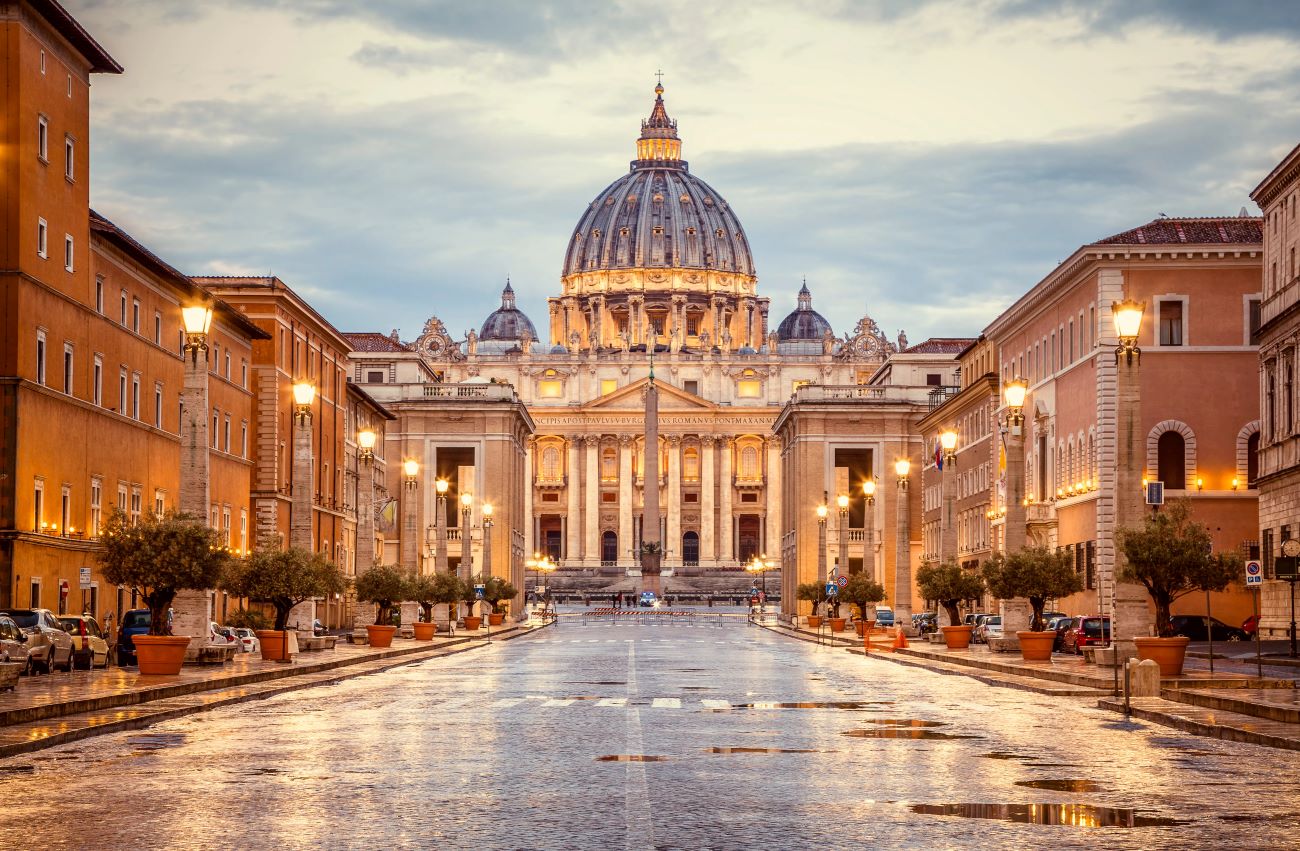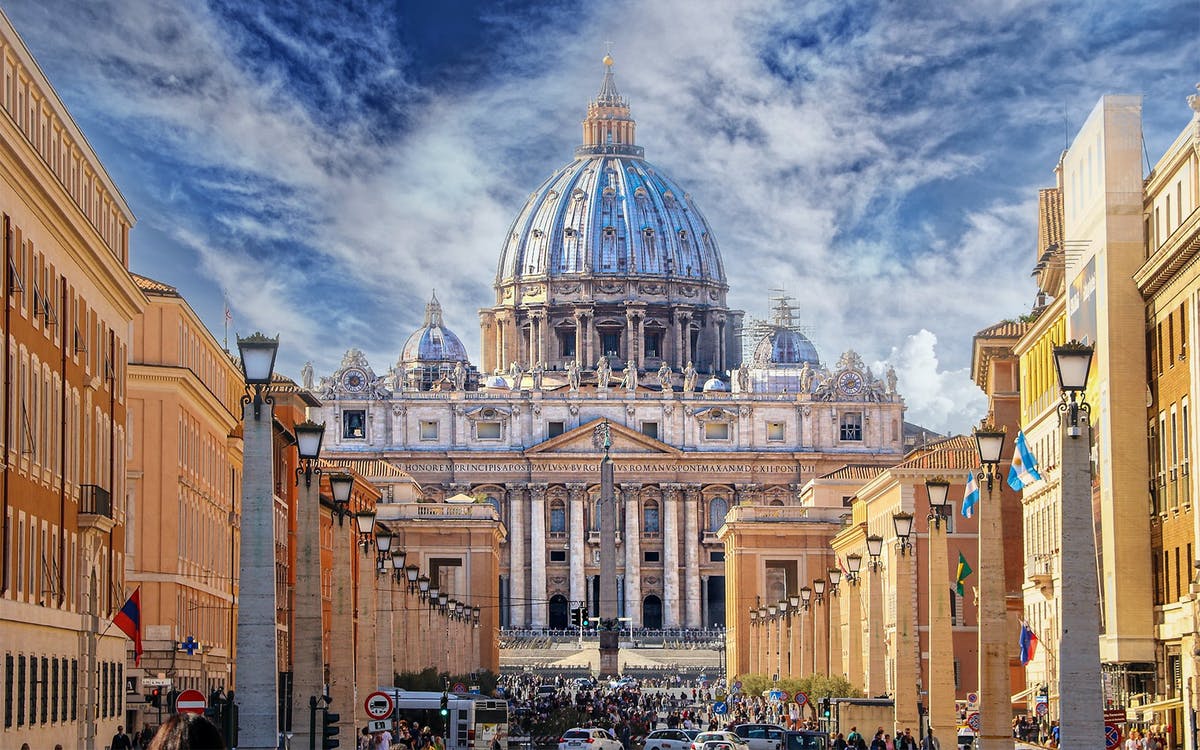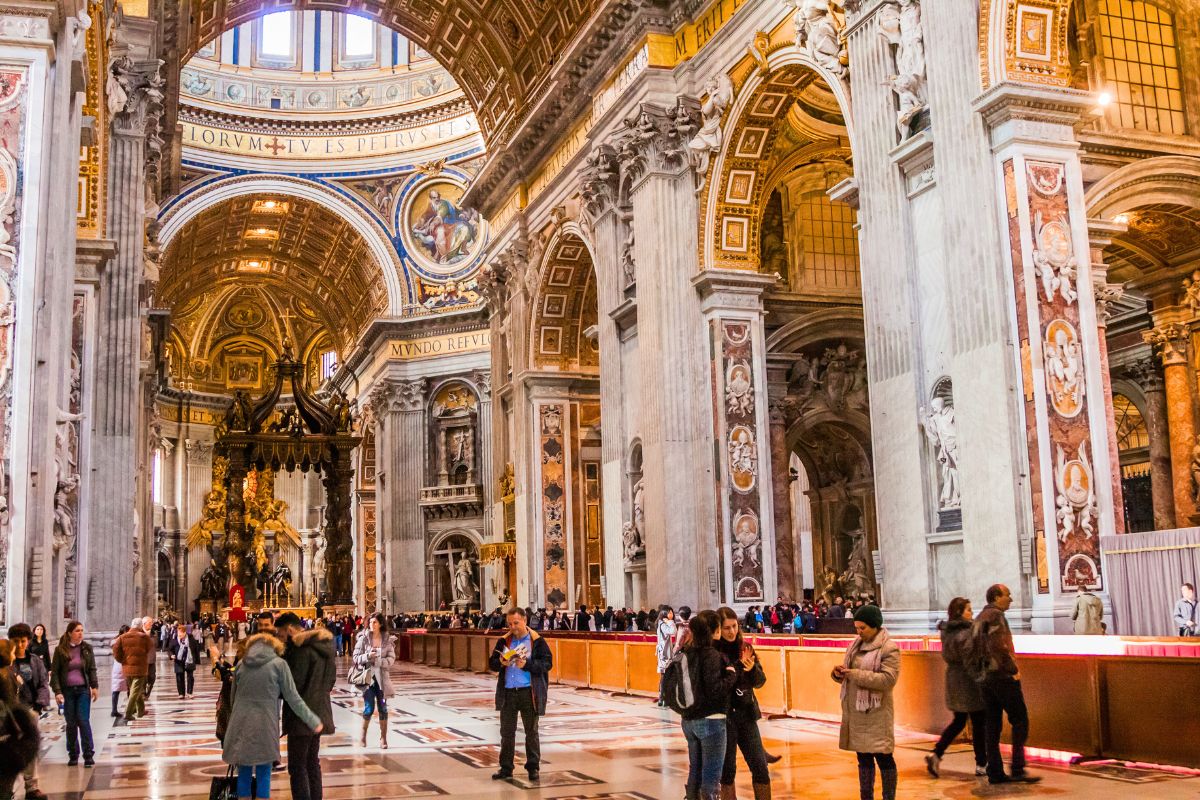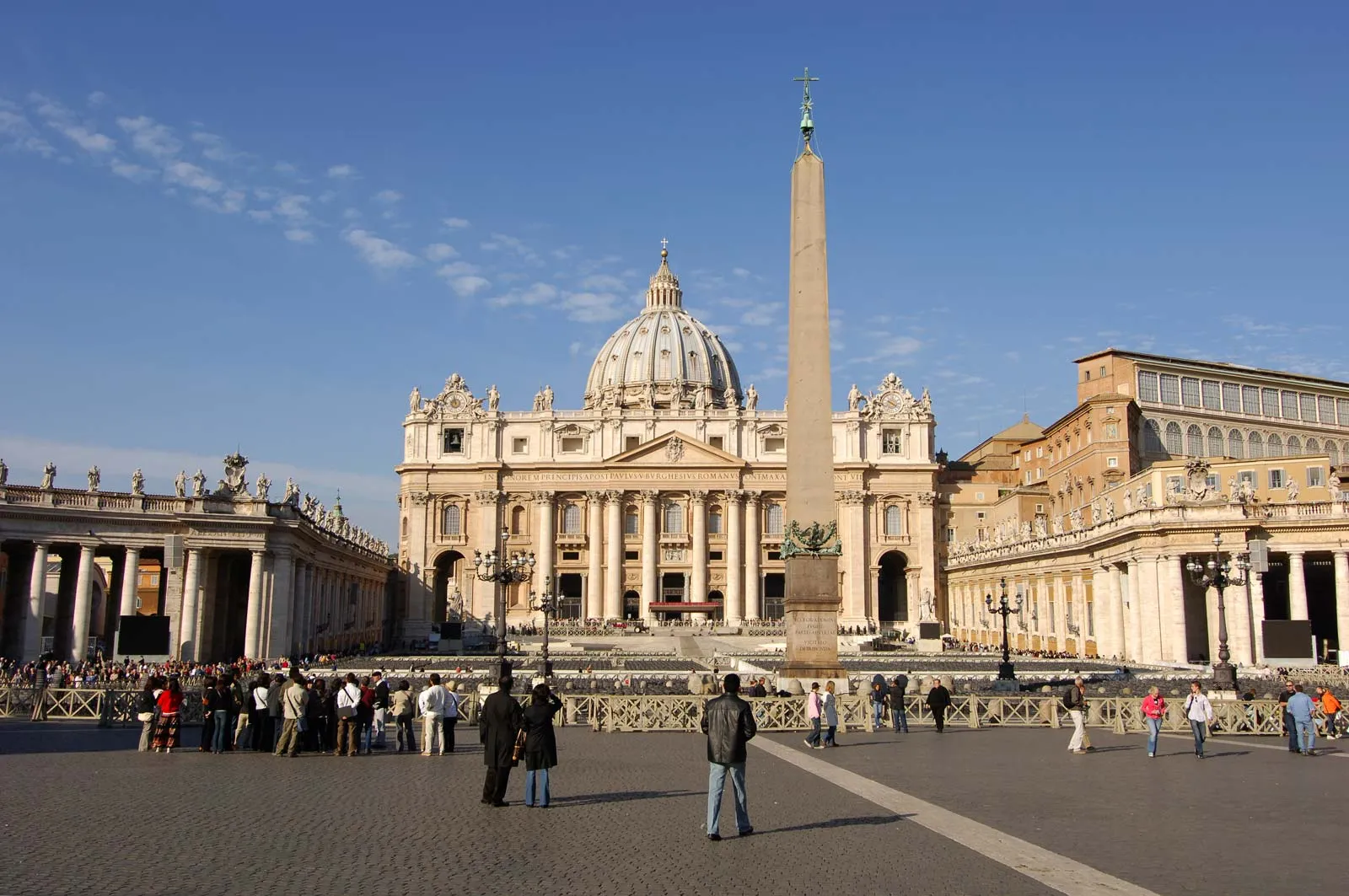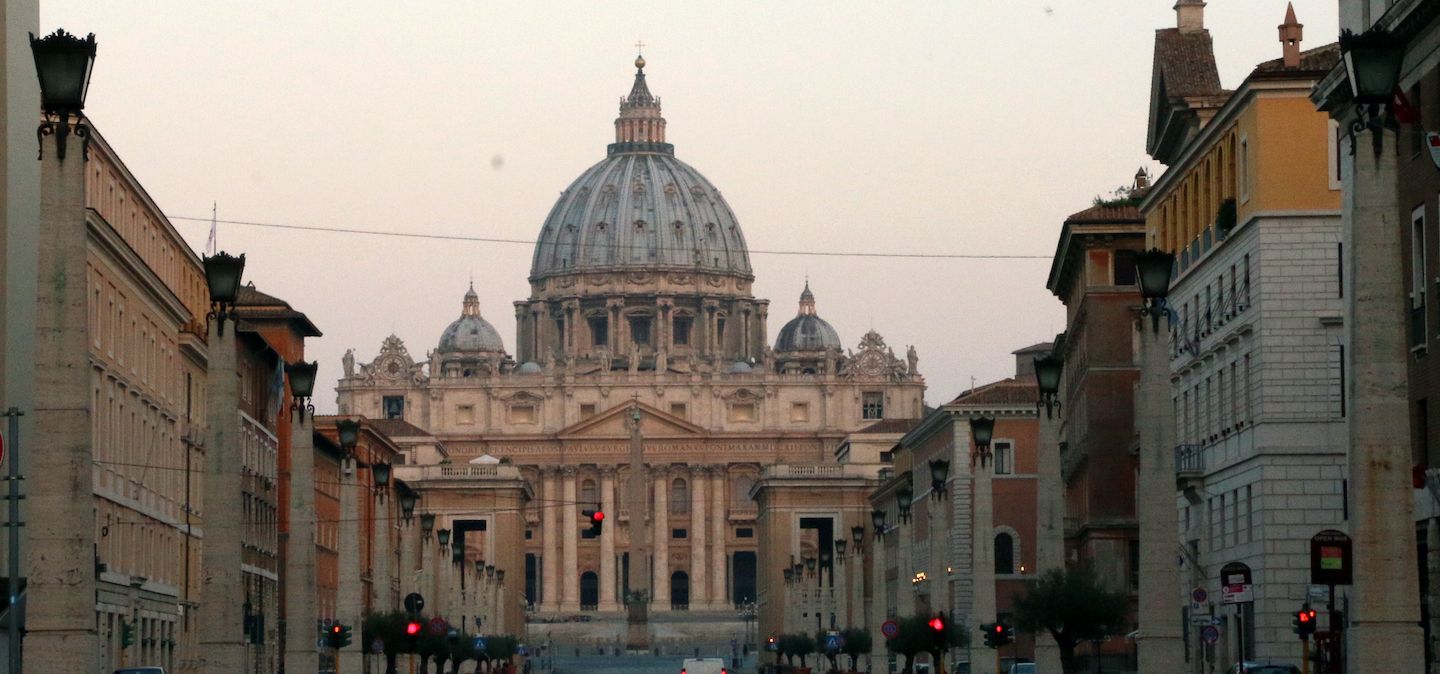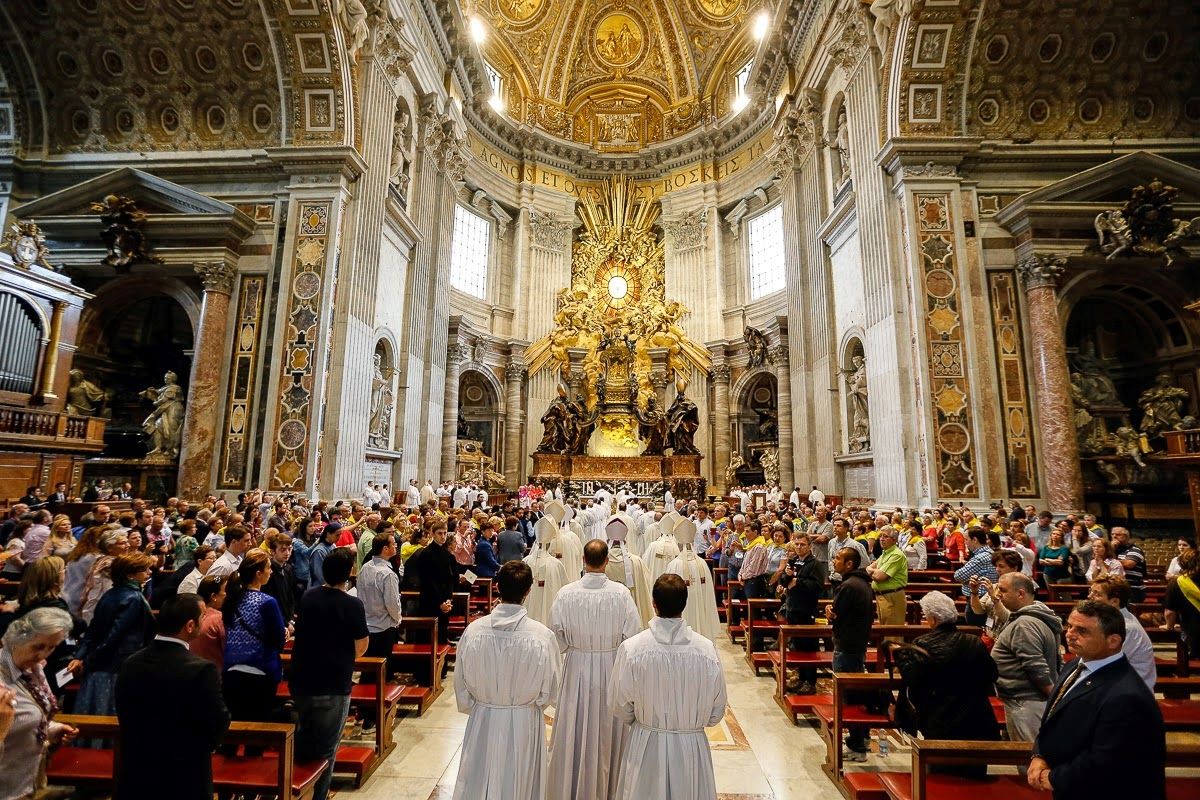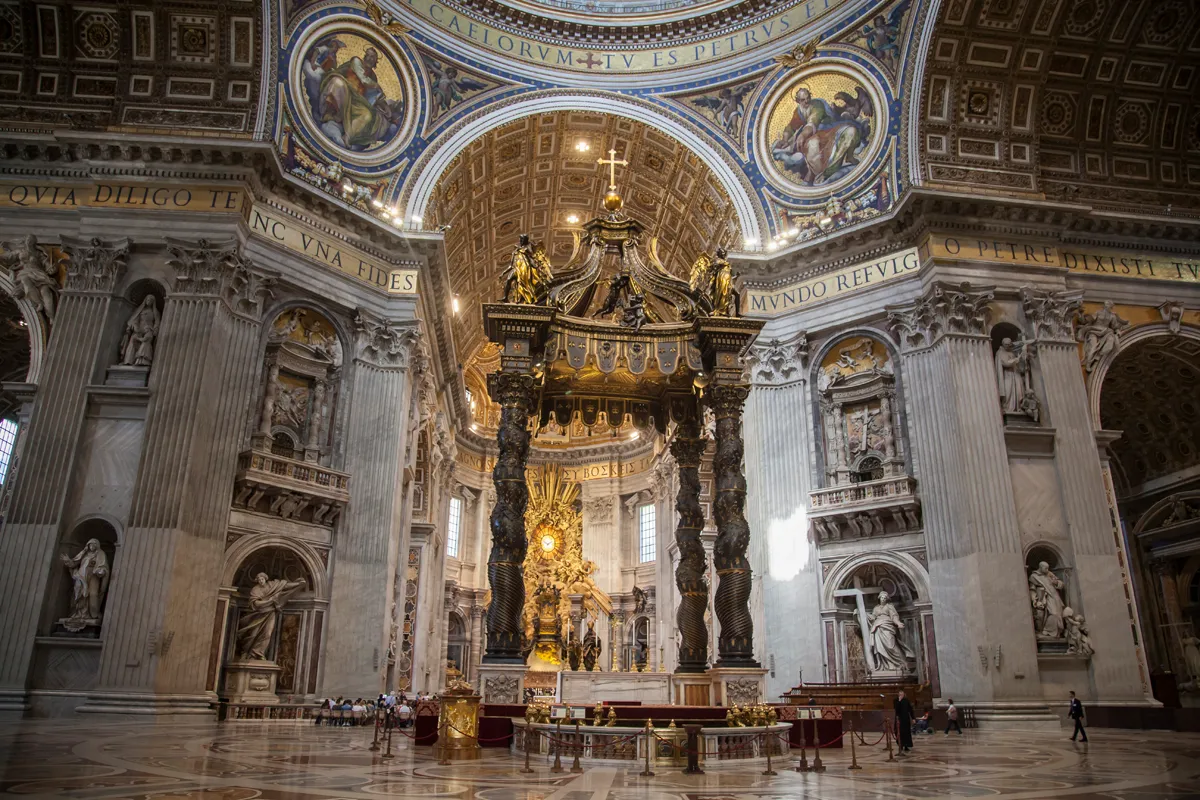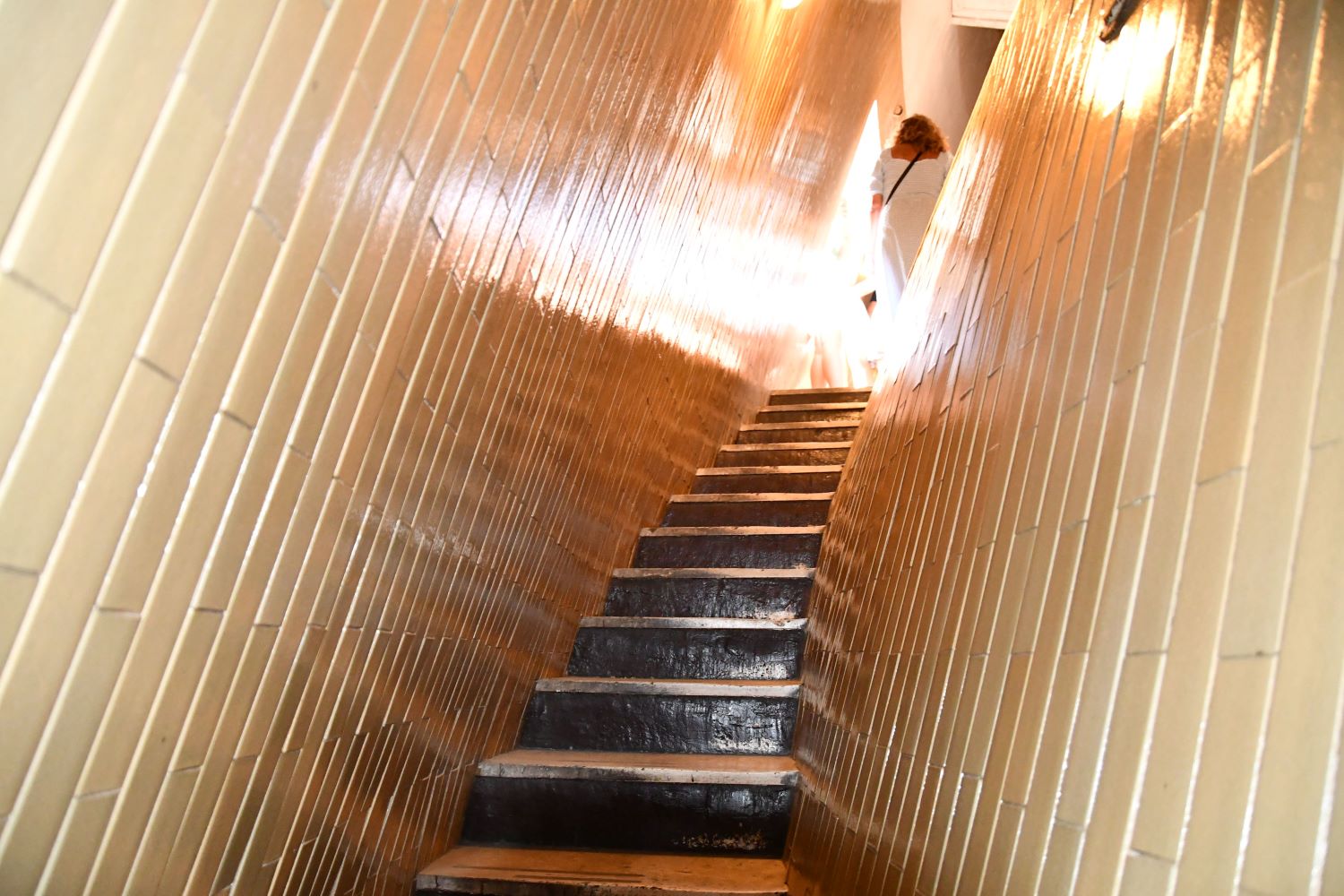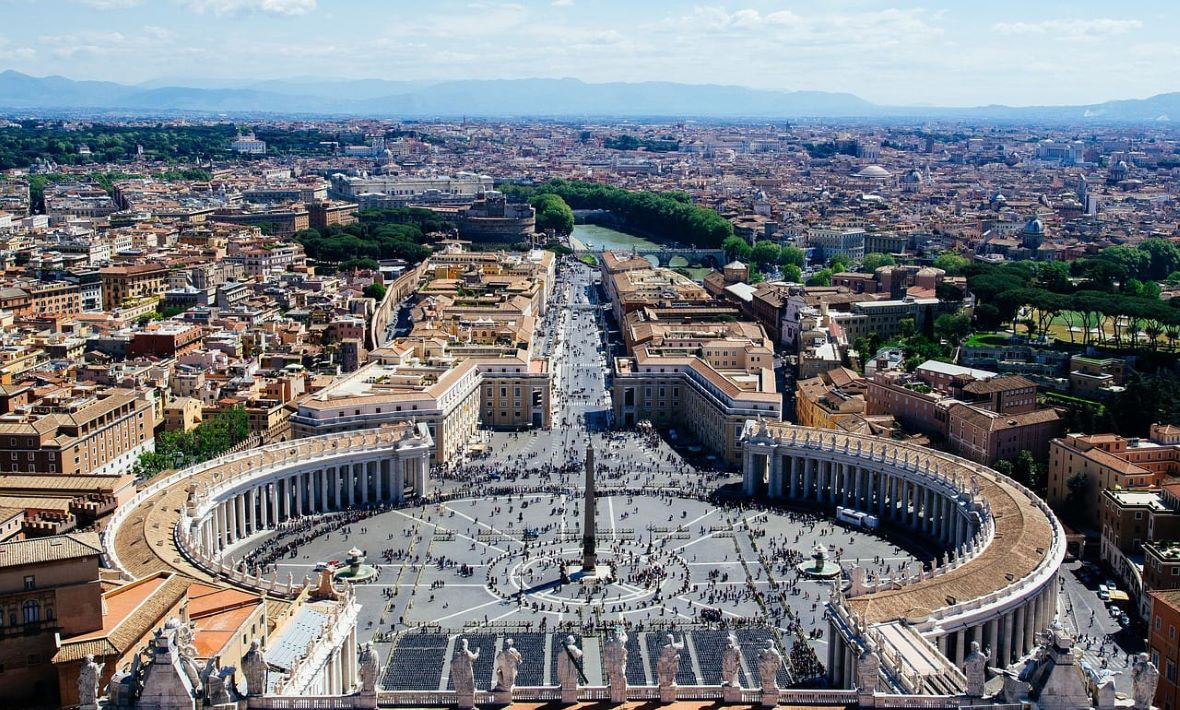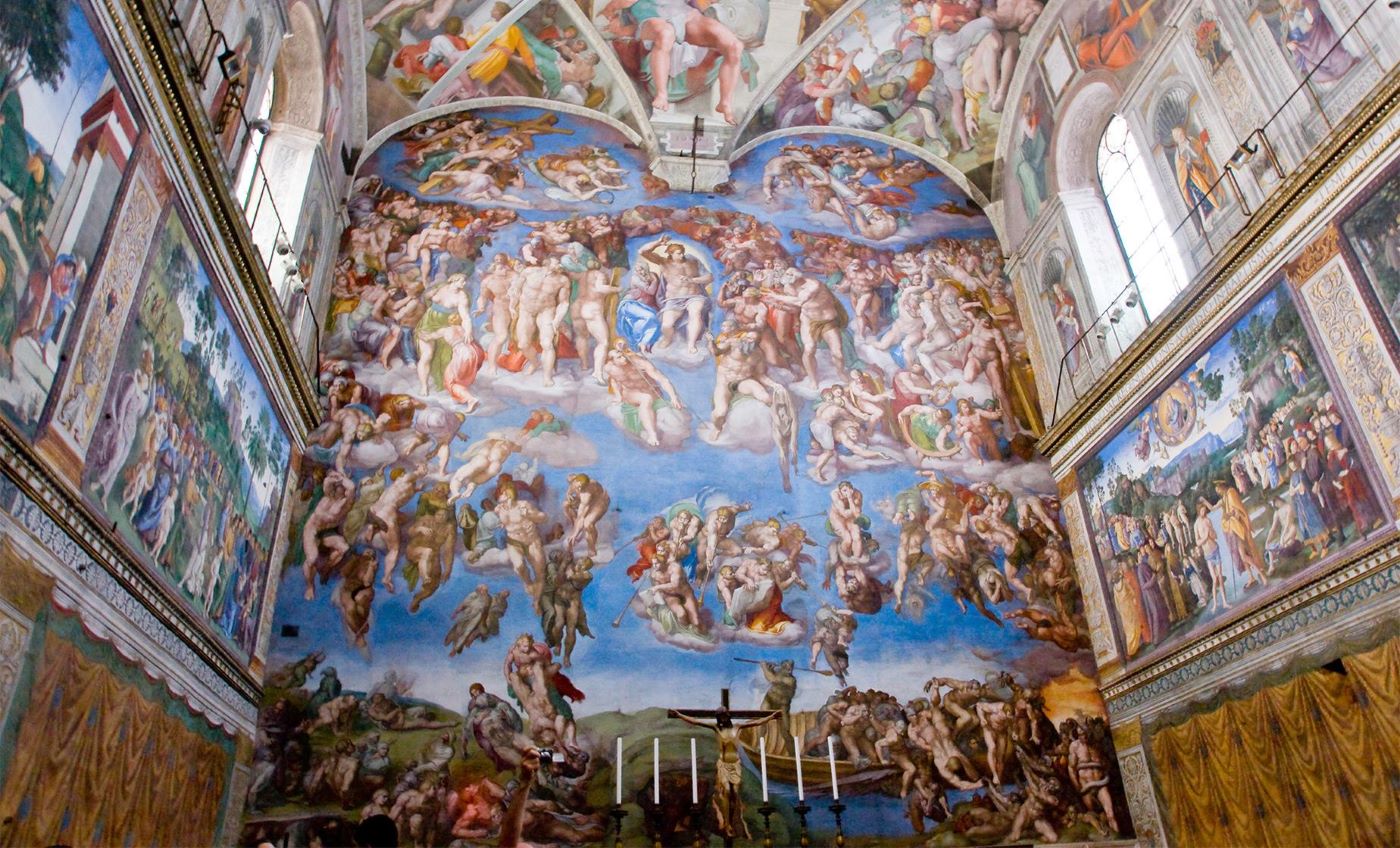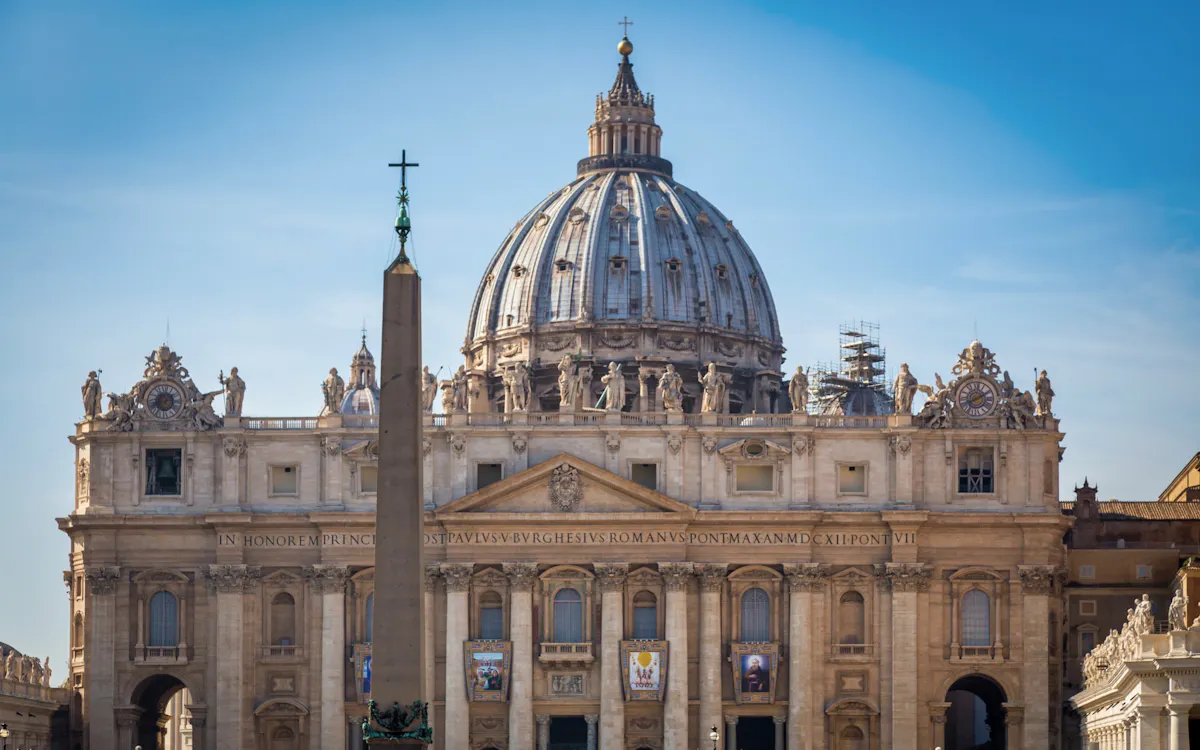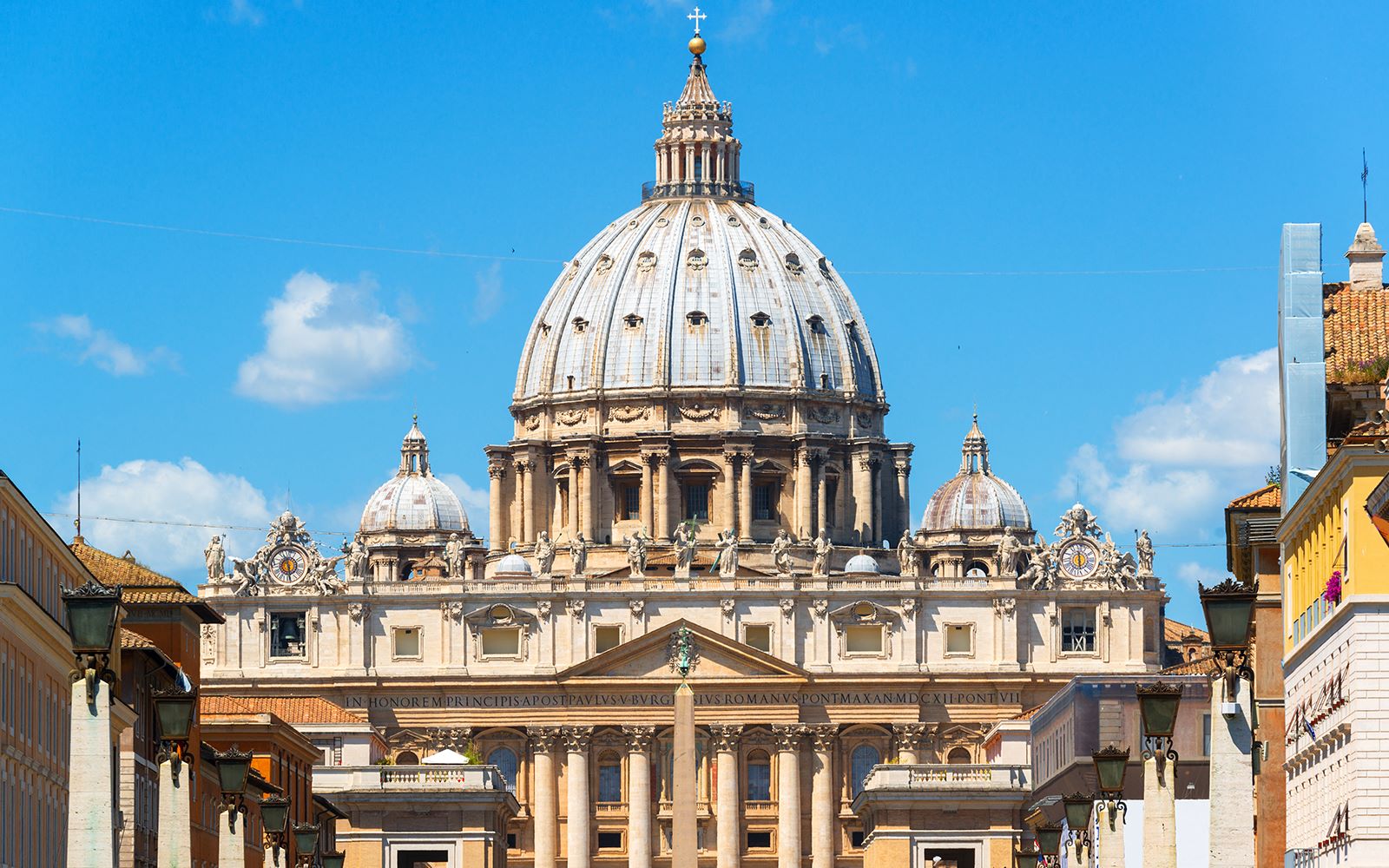Home>Arts and Culture>What To See At St. Peter’s Basilica


Arts and Culture
What To See At St. Peter’s Basilica
Published: February 10, 2024
Ericka Andersen, an editor at Christian.net, expertly merges digital strategy with content creation, focusing on faith and societal issues. Her communication skills enhance the platform's engaging narratives, fostering meaningful dialogue on belief's impact on society.
Discover the awe-inspiring art and cultural treasures at St. Peter's Basilica, including masterpieces by renowned artists and centuries of history. Immerse yourself in the rich arts and culture of this iconic landmark.
(Many of the links in this article redirect to a specific reviewed product. Your purchase of these products through affiliate links helps to generate commission for Christian.net, at no extra cost. Learn more)
Table of Contents
Introduction
St. Peter's Basilica, located in Vatican City, is an architectural masterpiece and a revered symbol of the Catholic Church. This iconic structure stands as a testament to centuries of history, art, and faith, drawing millions of visitors from around the world each year. As one of the holiest sites for Catholics and a marvel for art enthusiasts and history buffs, St. Peter's Basilica offers a captivating blend of religious significance and artistic grandeur.
The basilica's grandeur and historical significance make it a must-see destination for travelers seeking to immerse themselves in the rich tapestry of human achievement and spiritual devotion. Whether you are drawn to its religious importance, its architectural splendor, or its artistic treasures, St. Peter's Basilica promises an awe-inspiring experience that transcends boundaries of faith and culture.
As we delve into the history, architecture, and artistic treasures of St. Peter's Basilica, we will uncover the stories and masterpieces that have shaped this monumental edifice into a timeless symbol of human creativity and spiritual devotion. Join us on this journey to explore the wonders of St. Peter's Basilica, where history, art, and faith converge to create an unforgettable experience for all who step into its hallowed halls.
Read more: What Country Is St. Peter’s Basilica In
History of St. Peter's Basilica
St. Peter's Basilica stands as a testament to the enduring legacy of Christianity and the grandeur of Renaissance architecture. The history of this magnificent structure is intertwined with the rich tapestry of religious devotion, artistic patronage, and the rise and fall of empires.
The origins of St. Peter's Basilica can be traced back to the 4th century when the first church was built on the site believed to be the burial place of Saint Peter, one of the twelve apostles of Jesus. This early church, known as Old St. Peter's Basilica, served as a focal point for Christian worship and pilgrimage for centuries. However, as the centuries passed, the need for a grander and more imposing structure became apparent.
In the 16th century, Pope Julius II commissioned the renowned architect Donato Bramante to design a new basilica that would surpass the glory of its predecessor. Bramante's vision was ambitious, aiming to create a structure that would rival the grandeur of ancient Roman temples while embodying the spiritual essence of the Catholic Church. However, Bramante's design was only the beginning of a series of transformations that would shape the basilica into the awe-inspiring edifice we see today.
Following Bramante's tenure, a succession of eminent architects, including Michelangelo, Giacomo della Porta, and Carlo Maderno, contributed their expertise to the construction of St. Peter's Basilica. Each architect left their indelible mark on the basilica, infusing it with their unique artistic sensibilities and technical innovations.
The construction of St. Peter's Basilica spanned over a century, enduring the reigns of numerous popes and witnessing the ebb and flow of artistic and architectural trends. The basilica's completion in the 17th century marked the culmination of a monumental effort that had transformed the humble origins of the early Christian church into a monumental symbol of faith and artistic achievement.
Today, St. Peter's Basilica stands as a living testament to the enduring legacy of Christianity, the artistic genius of the Renaissance, and the unwavering devotion of countless artisans, architects, and patrons who contributed to its creation. Its history is a chronicle of human aspiration, spiritual devotion, and the timeless pursuit of beauty and transcendence.
Exterior of St. Peter's Basilica
The exterior of St. Peter's Basilica is a breathtaking testament to the grandeur of Renaissance architecture and the enduring legacy of the Catholic Church. As one approaches the basilica, the sheer magnitude of its design commands attention, evoking a sense of awe and reverence. The facade, characterized by its imposing scale and intricate details, reflects the harmonious blend of classical and Christian motifs, creating a visual symphony that captivates visitors from around the world.
At the heart of the basilica's exterior stands the iconic St. Peter's Square, a magnificent elliptical plaza designed by Gian Lorenzo Bernini, one of the foremost architects and sculptors of the Baroque era. The expansive colonnades that encircle the square embrace visitors in a welcoming embrace, symbolizing the motherly arms of the Catholic Church. The colonnades, adorned with rows of Doric columns and statues of saints, exude a sense of grandeur and spiritual embrace, setting the stage for the awe-inspiring encounter with the basilica itself.
The facade of St. Peter's Basilica, with its towering Corinthian columns, ornate pediments, and majestic statues, is a testament to the artistic prowess of the Renaissance masters who brought this vision to life. The central balcony, or loggia, serves as the iconic backdrop for the papal blessings, where the successor of St. Peter addresses the faithful gathered in the square below. The facade's harmonious proportions and intricate ornamentation reflect the ideals of classical beauty and spiritual significance, inviting visitors to contemplate the intersection of human creativity and divine inspiration.
The dome of St. Peter's Basilica, designed by Michelangelo and later completed by Giacomo della Porta, stands as a crowning achievement of architectural ingenuity. Its graceful curves and majestic presence dominate the skyline of Rome, serving as a beacon of faith and artistic excellence. The exterior of the dome, adorned with elegant pilasters and windows, culminates in a lantern crowned by a towering cross, symbolizing the triumph of the Christian faith and the divine presence that illuminates the world.
As the sun sets over St. Peter's Basilica, the warm glow of its travertine facade and the play of light and shadow across its majestic colonnades create a mesmerizing spectacle, inviting contemplation and reverence. The exterior of St. Peter's Basilica, with its timeless beauty and spiritual significance, stands as a testament to the enduring power of human creativity and the transcendent aspirations of the human spirit.
Interior of St. Peter's Basilica
Stepping into the hallowed interior of St. Peter's Basilica is an experience that transcends the boundaries of time and space. The vast expanse of the basilica's interior unfolds like a symphony of light, color, and architectural splendor, enveloping visitors in a realm of transcendent beauty and spiritual reverence.
The central nave, flanked by majestic aisles, draws the eye toward the focal point of the basilica – the high altar and the baldacchino, a monumental bronze canopy designed by Gian Lorenzo Bernini. The baldacchino, standing over 90 feet tall, serves as a visual anchor, symbolizing the triumph of the Catholic faith and the enduring presence of divine grace. Its intricate details and golden hues reflect the Baroque opulence that defines the basilica's interior, inviting contemplation and awe.
As visitors traverse the nave, their gaze is drawn upward to the celestial wonder of the basilica's dome. Designed by Michelangelo, the dome soars to a height of 136 meters, crowned by a radiant depiction of the Holy Spirit in the form of a dove. The interplay of light and shadow, filtering through the dome's windows, creates an ethereal ambiance that infuses the space with a sense of divine transcendence.
The side chapels that line the nave and aisles are adorned with masterpieces of Renaissance and Baroque art, including Michelangelo's poignant "Pieta" and Bernini's captivating "Ecstasy of Saint Teresa." These sacred alcoves serve as sanctuaries of artistic and spiritual contemplation, inviting visitors to immerse themselves in the profound beauty and religious devotion that permeate the basilica's interior.
The vast expanse of the basilica's interior unfolds like a symphony of light, color, and architectural splendor, enveloping visitors in a realm of transcendent beauty and spiritual reverence.
The central nave, flanked by majestic aisles, draws the eye toward the focal point of the basilica – the high altar and the baldacchino, a monumental bronze canopy designed by Gian Lorenzo Bernini. The baldacchino, standing over 90 feet tall, serves as a visual anchor, symbolizing the triumph of the Catholic faith and the enduring presence of divine grace. Its intricate details and golden hues reflect the Baroque opulence that defines the basilica's interior, inviting contemplation and awe.
As visitors traverse the nave, their gaze is drawn upward to the celestial wonder of the basilica's dome. Designed by Michelangelo, the dome soars to a height of 136 meters, crowned by a radiant depiction of the Holy Spirit in the form of a dove. The interplay of light and shadow, filtering through the dome's windows, creates an ethereal ambiance that infuses the space with a sense of divine transcendence.
The side chapels that line the nave and aisles are adorned with masterpieces of Renaissance and Baroque art, including Michelangelo's poignant "Pieta" and Bernini's captivating "Ecstasy of Saint Teresa." These sacred alcoves serve as sanctuaries of artistic and spiritual contemplation, inviting visitors to immerse themselves in the profound beauty and religious devotion that permeate the basilica's interior.
The basilica's interior is a testament to the enduring legacy of artistic genius and spiritual devotion, inviting visitors to embark on a journey of contemplation and wonder. Each architectural element, each artistic masterpiece, and each sacred space within the basilica's interior converge to create an immersive experience that transcends the boundaries of time and culture, leaving an indelible impression on all who have the privilege of stepping into this sacred realm.
Main Attractions at St. Peter's Basilica
The main attractions at St. Peter's Basilica are a testament to the enduring legacy of artistic mastery, religious devotion, and historical significance. Each corner of this sacred edifice holds treasures that captivate the senses and inspire awe, inviting visitors to embark on a journey through the annals of human creativity and spiritual transcendence.
Read more: Who Built St. Peter’s Basilica
The Pieta by Michelangelo
One of the most revered masterpieces housed within St. Peter's Basilica is Michelangelo's sublime sculpture, the Pieta. This iconic work of art depicts the Virgin Mary cradling the lifeless body of Jesus Christ with a tenderness and grace that transcends the boundaries of stone and breathes life into the timeless narrative of compassion and sacrifice. The Pieta stands as a pinnacle of Renaissance art, showcasing Michelangelo's unparalleled skill in sculpting marble with a level of detail and emotional depth that continues to mesmerize and move viewers from around the world.
The Baldacchino by Gian Lorenzo Bernini
Gian Lorenzo Bernini's monumental bronze baldacchino, standing beneath the basilica's awe-inspiring dome, is a triumph of Baroque opulence and artistic grandeur. This towering canopy, adorned with intricate details and gilded embellishments, serves as a visual anchor within the basilica's interior, symbolizing the triumph of the Catholic faith and the enduring presence of divine grace. The baldacchino's commanding presence and ornate beauty invite contemplation and reverence, reflecting the artistic exuberance and spiritual devotion of the Baroque era.
The Dome and Michelangelo's Architectural Marvel
The soaring dome of St. Peter's Basilica, designed by Michelangelo, stands as a crowning achievement of architectural ingenuity and artistic vision. The interplay of light and shadow, filtering through the dome's windows, creates an ethereal ambiance that infuses the space with a sense of divine transcendence. Visitors can ascend to the top of the dome for a breathtaking panoramic view of Vatican City and the surrounding landscape, offering a unique perspective on the architectural and historical splendor of this sacred site.
The Papal Tombs and Grottoes
Beneath the hallowed halls of St. Peter's Basilica lie the papal tombs and grottoes, where centuries of history and religious devotion are enshrined. Visitors can explore this subterranean realm, adorned with ancient mosaics, marble sarcophagi, and the final resting places of numerous popes, including the revered tomb of St. Peter himself. The papal tombs and grottoes offer a profound glimpse into the spiritual and historical legacy of the Catholic Church, inviting contemplation and reverence for the enduring impact of these revered figures.
Read more: Who Designed St. Peter’s Basilica
The Sacristy and Treasury
The sacristy and treasury of St. Peter's Basilica house a rich collection of religious artifacts, ceremonial vestments, and precious relics that illuminate the ecclesiastical splendor and historical significance of the basilica. Visitors can marvel at intricately embroidered vestments, glittering chalices, and ancient manuscripts, each bearing witness to the enduring traditions and sacred rituals of the Catholic faith. The sacristy and treasury offer a glimpse into the material and spiritual wealth of the Church, inviting visitors to immerse themselves in the opulent heritage of St. Peter's Basilica.
Each of these main attractions at St. Peter's Basilica embodies the timeless convergence of art, faith, and history, inviting visitors to embark on a journey of contemplation and wonder. From the ethereal beauty of Michelangelo's Pieta to the grandeur of Bernini's baldacchino, the basilica's treasures stand as a testament to the enduring power of human creativity and the transcendent aspirations of the human spirit.
Tips for Visiting St. Peter's Basilica
-
Plan Your Visit Strategically: St. Peter's Basilica is a popular tourist destination, so it's advisable to plan your visit strategically. Arriving early in the morning or late in the afternoon can help you avoid the crowds and long queues, allowing for a more serene and immersive experience.
-
Dress Code and Etiquette: As a place of worship, St. Peter's Basilica has a strict dress code. Visitors are required to dress modestly, covering their shoulders and knees. Additionally, respectful behavior is expected, as the basilica is a sacred site for millions of pilgrims and worshippers.
-
Guided Tours and Audio Guides: Consider joining a guided tour or using an audio guide to enhance your visit. These resources provide valuable insights into the history, art, and architecture of the basilica, enriching your understanding and appreciation of its significance.
-
Climb to the Dome: For a unique perspective of Vatican City and the surrounding area, consider climbing to the top of the basilica's dome. The ascent offers panoramic views and a closer look at the architectural marvel of Michelangelo's dome.
-
Visit the Papal Tombs and Grottoes: Take the time to explore the papal tombs and grottoes beneath the basilica. This subterranean realm holds centuries of history and reverence, offering a profound glimpse into the spiritual and historical legacy of the Catholic Church.
-
Respect Photography Restrictions: While photography is permitted in most areas of the basilica, there are restrictions in certain sections. Be mindful of signage and guidelines regarding photography to ensure that you respect the sacred spaces and artworks within the basilica.
-
Be Mindful of Religious Services: St. Peter's Basilica is an active place of worship, hosting religious services and ceremonies. If you visit during a service, maintain a respectful distance and observe quietly to avoid disrupting the solemnity of the occasion.
-
Explore the Surrounding Area: After your visit to the basilica, take the time to explore the surrounding area, including St. Peter's Square and the Vatican Museums. Each of these sites offers its own unique insights into the history and culture of Vatican City.
-
Reflect and Immerse Yourself: Finally, take moments for quiet reflection and immersion in the spiritual ambiance of St. Peter's Basilica. Whether you are a devout pilgrim or an admirer of art and history, allow yourself to be captivated by the profound beauty and significance of this sacred space.
By keeping these tips in mind, you can make the most of your visit to St. Peter's Basilica, ensuring a memorable and respectful experience that honors the historical, artistic, and spiritual heritage of this iconic site.
